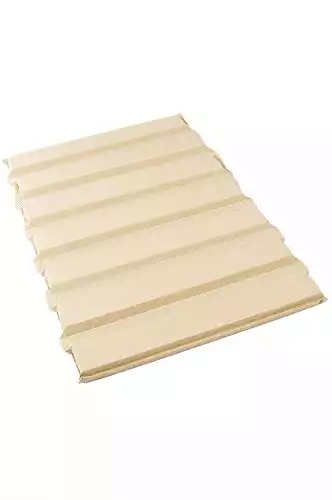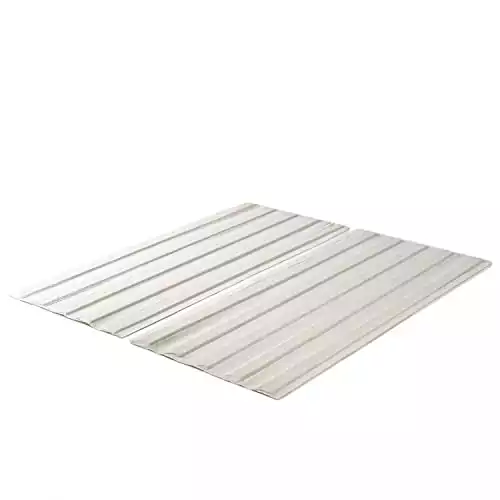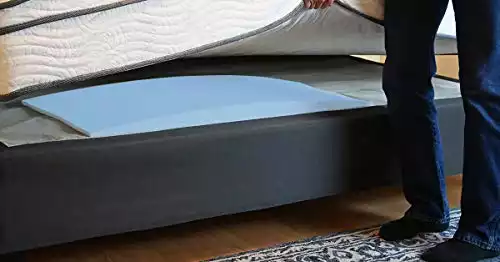How to Fix a Sagging Mattress [8 Effective Solutions]
Is your mattress beginning to sag? Are you wondering why this is happening and how you can fix it? Will you need to spend a large sum on a new one?
Not to worry. We have picked up and recycled over a million mattresses throughout the country for people who are having problems with their mattresses. We know exactly what causes a mattress to sag and how it can be fixed or when it needs to be replaced. We will walk you through step by step and help you get back to a comfortable and FLAT mattress.
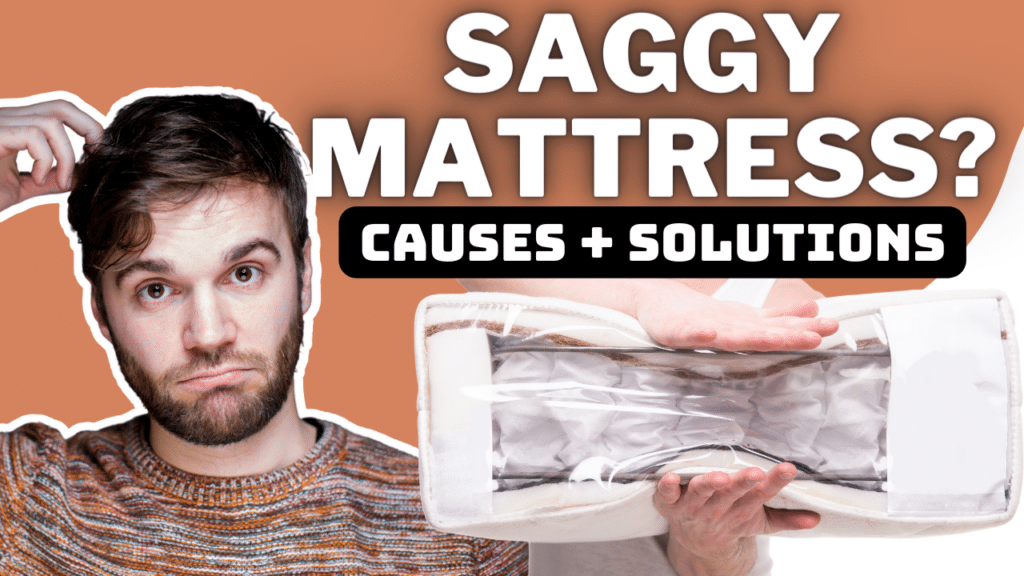
This article is grouped into 2 sections (Causes and Solutions)
1) Causes: 7 common causes of a sagging or sinking mattress
2) Solutions: 8 solutions for how to fix or remedy your sagging mattress.
Causes: 7 Common Causes of a Sagging Mattress
Since a mattress’s edge has good support, you may question what causes the sinking in the middle. With time, the mattress wears down from repeated use. Sagging becomes an issue at this point. Here are some of the reasons why you have a sagging mattress.
1. Broken Box Spring or Missing Bed Frame Support
One of the leading causes of mattress sagging is a broken box spring or a missing bed frame support bar . A box spring and bed frame support the base of your mattress’s weight and help it sit flat.
As time goes by, the coils and springs within your box spring can wear out, causing your mattress to start sinking in the middle due to a weakened support system. Your bed frame for Queen and King bed frames also is supposed to have a center support bar, if that bar is missing or broken your bed will not have suport in the center and will certainly sag. It’s in your best interest to purchase high-quality bed frames and box springs to ensure your mattress is most effective.
2. Not Rotating or Flipping Your Mattress
If you fail to turn or flip your mattress regularly (every 3 months), it’ll start to wear down quicker in certain areas due to your constant bodyweight’s pressure. The mattress’s foam and springs will wear unevenly, resulting in a sagging mattress.
3. Your Mattress Is Too Soft
Softer mattresses are not as sturdy as firmer mattresses. While some sleepers like the feel of a softer mattress, if your mattress is too soft and lacks enough underlying support, it’s likely to start sinking in the middle. That’s particularly an issue if you and your partner sleep on different sides of the mattress. One side will sink more than the other, creating an uncomfortable sleeping surface.
4. Sleeping Positions
Whether you sleep alone, with a spouse, or with a pet, your mattress’s form and balance will change with time. For instance, if you sleep on either the right or left side of the mattress daily or love sleeping on one side with your partner, you will likely begin sinking on that side.
Furthermore, if you share your bed with a furry friend, their favorite position could end up sinking. Your mattress tends to sink more on the part where you rest your shoulders and hips.
5. Wear and Tear
Mattresses don’t last forever. It doesn’t matter if the material is latex, foam, or a traditional spring mattress. Over time, your quality mattress will lose its resilience.
Traditional spring mattresses, for example, will likely lose their bounce after repeated uses. That causes the mattress to sag in those locations. Because of the compressive nature of foam and latex, mattresses tend to become moldable after prolonged use.
6. Inferior Materials Used in Cheap Mattresses
Cheaper mattresses are often made of lower-quality materials, meaning they may not last as long or provide the same support as more expensive models. A heavier mattress typically contains denser foams and coils, which give better support and durability than lighter models.
Higher-density foam will last longer and offer better support than low-density foam. However, low-density foam can quickly break down and become lumpy, creating a sagging mattress.
7. Jumping on the Mattress
Jumping on the mattress may be fun and exciting, but it’s not good for your mattress’s durability. That’s because it creates immense force, which can weaken or bend springs and internal structure of the mattress. The more often you jump on the bed, the quicker the mattress could start to sink in the middle. This is less of a problem with younger, lighter children.
Solutions: 8 Solutions for How To Fix a Sagging Mattress
Many individuals don’t know how to fix a worn-out mattress. However, it’s possible if you have the skills and the necessary equipment. You can adopt several measures to reduce your mattress’s sagging and improve its comfort.
The method’s success varies on the mattress’s age and the degree of the sagging. Here are several recommendations to fix your sagging mattress.
1. Use a Mattress Topper
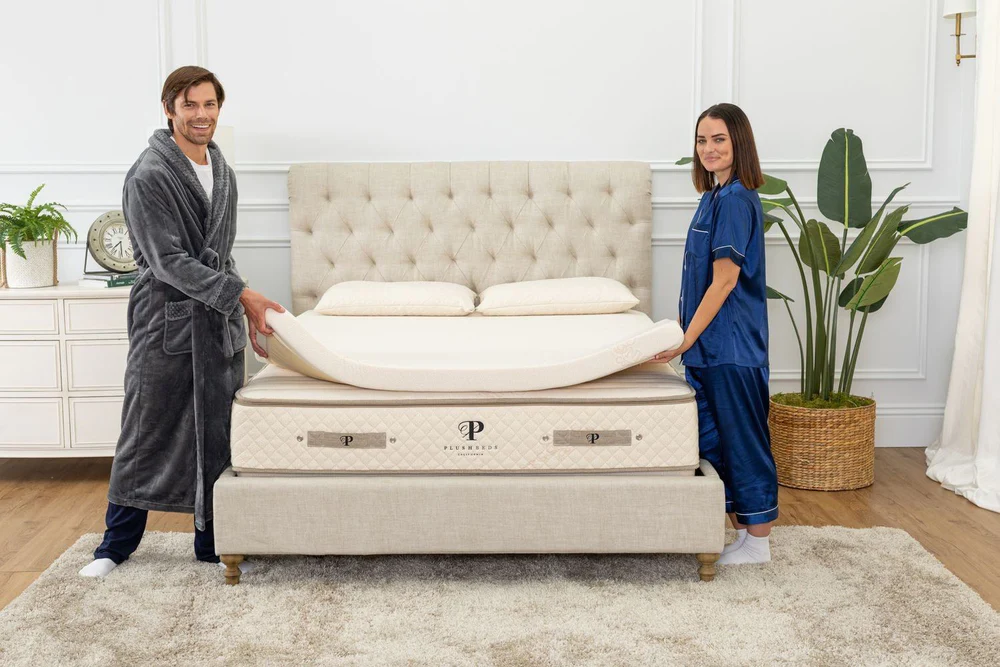
If your sagging mattress is due to broken down foam layers within the top of your mattress, you may consider buying a mattress topper. A topper is an extra layer you put on top of your standard mattress. You can purchase toppers as accessories, and they often have a thickness ranging from 2 to 5 inches. We recommend a heavier duty topper made for heavier individuals in order to provide the most support when putting it on top of a mattress that is breaking down.
Our Top Picks for the Best Heavy Duty Mattress Toppers
The most common materials include the following:
- Foam
- Latex
- Wool
- Feathers
The thicker and sturdier a topper’s material is, the more effective it is at preventing sagging. A quality topper will help you get a better night’s sleep by leveling up the surface. They’re an ideal alternative for someone who isn’t ready to invest in a new mattress.
Though a mattress topper won’t eliminate the sagging problem, it’s an inexpensive short-term solution to increase your mattress’s comfort.
2. Rotate the Mattress
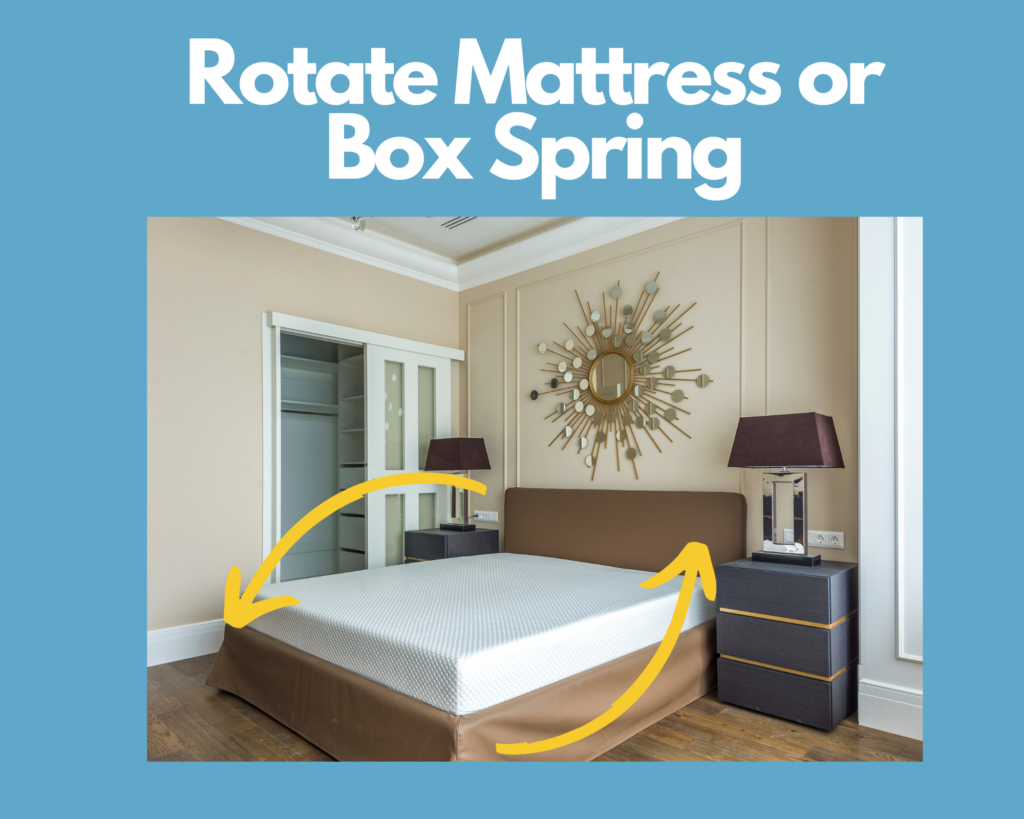
Unless the manufacturer advises against doing so, most mattresses require regular rotation. You may enhance your mattress’s longevity by switching the head and foot of the bed. Furthermore, frequent rotation helps in delaying the onset of early sagging. If you want to stay safe, aim to rotate your mattress once every 3 to 6 months.
The parts of the mattress that bear most of your weight when you’re sleeping are the first to sag. That’s typically the region between the hips and the shoulders. By rotating your mattress, you allow these parts to rest on areas that aren’t yet saggy.
However, some contemporary mattresses have a one-sided design. Thus, rotating them might result in less comfort and a higher risk of bed damage.
3. Place a Specialized Anti-Sag Mat or Pillow or Under the Mattress
Sometimes, placing a special anti-sag mat or pillow under a sagging mattress can help. A mat or thin pillow in the space between the mattress and the bed frame or box spring can alter the pressure exerted on the mattress. That permits the mattress to reclaim its previous form.
You should combine multiple soft pillows and blankets if one isn’t sufficient. The more structural reinforcements you can put on your mattress, the better.
4. Use a Bunkie Board or Plywood
Bunkie Boards or a DIY Plywood sheet is one of the best materials when fixing a mattress sinking in the middle due to a broken down box spring. You can buy a bunkie board for cheap online or you can track down the appropriate plywood and have it custom-cut to your bed’s dimensions. You may need two plywood sheets, depending on your mattress’s size.
The best thing to do if your bed has box springs is to place the bunkie or plywood between the frame and the mattress and remove the broken box spring. If your bed has slats, consider using the plywood sheet to lace them. You have to determine the reason for your mattress sag, as that will dictate whether or not plywood will be effective in correcting the sinking problem.
5. Buy Ready-Made Mattress Support
Consider investing in ready-to-use mattress support to help bump up the sagging portion. These foam additions offer moderate to heavy support between your mattress and box springs. Because you should only place them beneath a sag and not across the bed’s entire surface, they often come in smaller sizes and are more affordable.
6. Change the Foundation
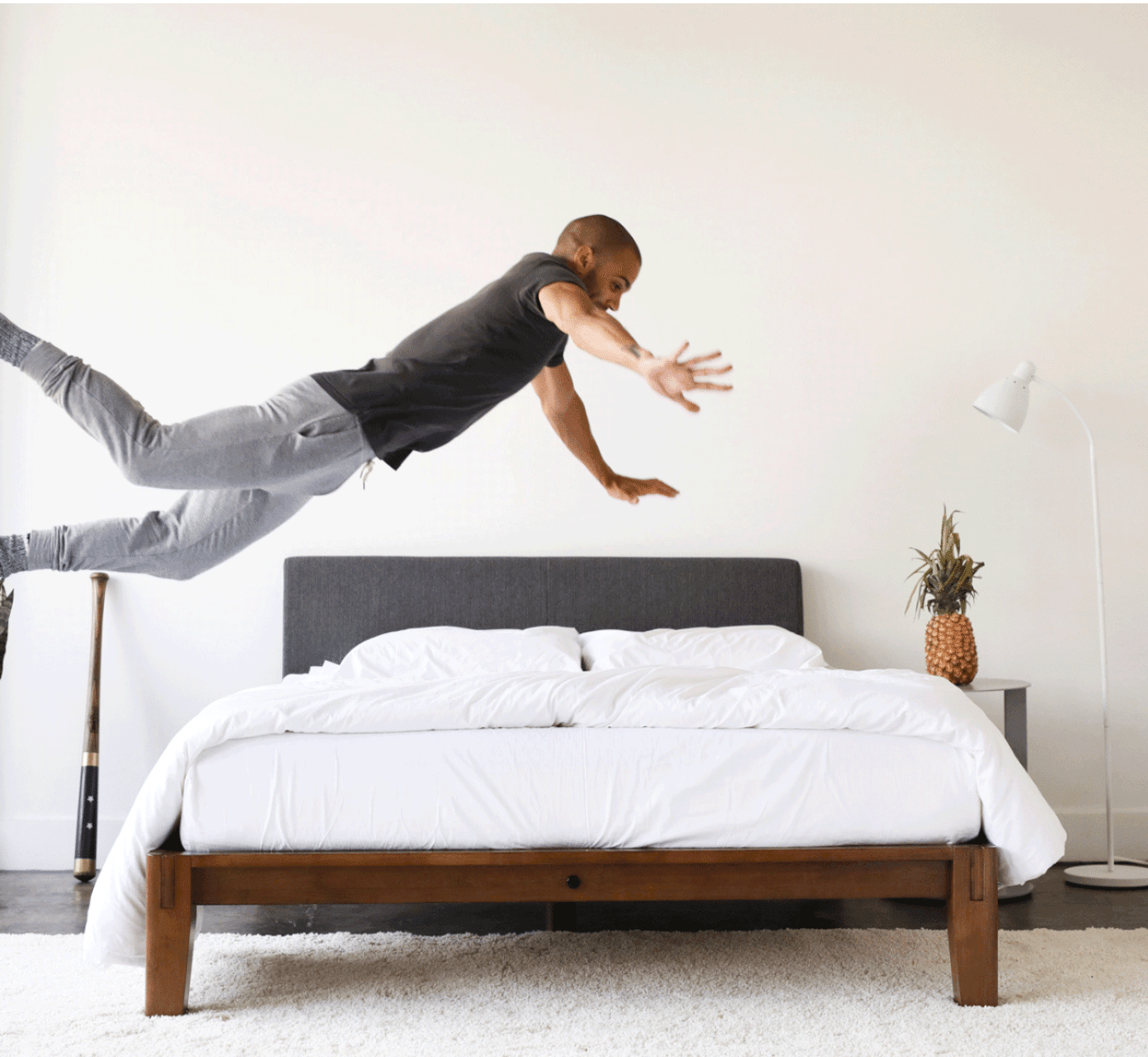
12 Sturdiest Bed Frames
Thousands Tested
Your bed’s frame may also hasten a mattress’s sinking in the middle. Early sagging is common on mattresses supported by foundations with fewer than six legs since they tend to have less structural integrity in the middle. Likewise, slated foundations may result in sinking problems, especially within regions that aren’t in direct contact with the slats.
Furthermore, aging foundations will deteriorate with time. The foundation that will work best with your mattress depends on many variables. It’s best to consult the mattress’s manufacturer for specifications. The manufacturer might discredit your warranty if the space between the slats doesn’t meet their requirements.
7. Learn About Your Warranty
If your mattress sinks in the middle, it’s a good idea to check what your warranty covers. It may be due to a defective product and the manufacturer may be responsible for fixing or replacing it.
8. Invest in a New Mattress

Our Top Mattress Picks In Each Category
We have torn open and recycled over 1 million mattresses from every major manufacturer. We know which mattresses customers are loving and which they are returning.
Even though it’s costly, getting a good mattress is essential since you spend one-third of your time in bed. The significance of adequate support and sleep and how they affect general human health is everywhere in mainstream media.
Furthermore, the solutions above are low-cost and may suffice in giving short-term comfort, but they won’t provide lasting benefits.
Frequently Asked Questions
Here are the most common questions people ask about mattresses sagging in the middle.
What are the common causes of a sagging mattress?
Common causes of a sagging mattress include poor sleep posture, not rotating or flipping your mattress, using a soft mattress, and broken box spring support.
How do I fix a sagging mattress?
Depending on the cause, there are many ways to fix a sagging mattress. Replacing the support system is likely the best solution if it’s due to broken box springs. If the cause is an accumulated body weight over time, you may consider flipping the mattress or using a mattress topper.
How can I prevent my mattress from sagging?
To prevent your mattress from sagging, make it a habit to inspect sags at least once per month. In addition, remember to add a mattress topper every time you purchase a new mattress. Rather than dealing with a more severe issue with your mattress, it’s preferable to deal with the sags as soon as they show.
How long should a mattress last before it can begin sagging?
The average lifespan of a mattress is about 7 to 10 years. However, depending on the type of mattress and the quality of materials used, the time frame can vary. For example, a quality mattress with high-grade materials will last longer than a lower-quality mattress.
Do firmer mattresses sag less?
A firm mattress is a good starting point if you’re looking for one that will not start sagging a few years after the purchase. Firmer mattresses have more support, rendering them more durable than softer ones. However, age, wear and tear, and body weight will also determine how quickly your mattress starts sagging.
Is a sagging mattress bad?
Yes, a sagging mattress is uncomfortable and results in back and neck pain. It can also interfere with your body’s support, causing a lack of proper spinal alignment. That results in numbness and stiffness when you wake up in the morning.
How many times should you flip a mattress?
Ideally, your mattress needs flipping every three months. It ensures even distribution of the fillings, guaranteeing that every side of the mattress bears equal wear and tear. That renders the mattress less susceptible to sinking on one side. Flipping applies even when you use the mattress alone.
Final Thoughts
Many things can affect the quality of your sleep, but having the right mattress makes all the difference. A sagging mattress can cause discomfort and a poor night’s sleep. Insufficient body weight support by a mattress might lead to various health problems. And you certainly don’t want it to happen.
Regularly rotating and flipping your mattress can help to reduce the sagging intensity, but if you notice any unevenness or sinking, it’s essential to address the problem immediately. A quality mattress should last 7-10 years before showing signs of wear. So, if your mattress has seen better days when signs of sagging begin to appear, it’s likely time for an upgrade.

